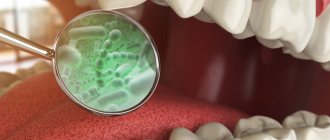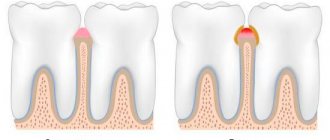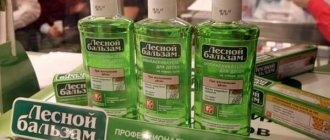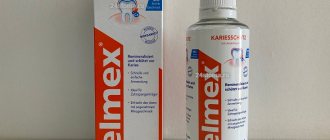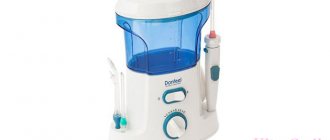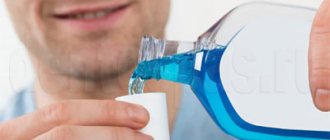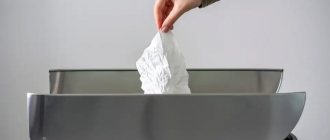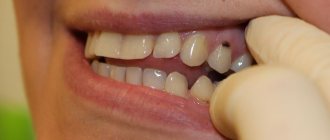The ancestors of modern mouthwashes
People have probably always felt the need to take care of oral hygiene. Descriptions of the technology of brushing teeth are found in the Torah and the Koran, in the writings of Hippocrates and in many other historical sources. Moreover, most often these are descriptions of prototypes of modern toothbrushes. Does this mean that mouthwashes are a modern invention? Not at all! And although the first specific descriptions and recipes for preparing elixirs for rinsing are found in much later sources, due to its accessibility, this method of hygiene was much more widespread than brushing teeth. The compositions of the first mouth rinses were simple. All kinds of decoctions of herbs, flowers, bark, essential oils and much more were used as a rinse.
Rinse after brushing teeth
Children's rinses used after brushing kill bacteria responsible for bad odor (halitosis), and also help prevent tooth decay and reduce plaque. They are used twice daily after brushing and flossing.
Children should be able to determine whether they have brushed their teeth well - despite this, the list of hygiene procedures for children can include the use of rinses before brushing their teeth, as well as rinses used after brushing their teeth and having an anti-caries effect.
Types of mouth rinses
The entire variety of mouth rinses on the market can be divided into two main types: hygienic (sometimes also called cosmetic) and medicinal. The first perform mainly one function - refresh. Of course, they also help remove food debris, but they cannot help remove plaque and serious dental diseases. Also among them are whitening mouth rinses, but their effectiveness is questioned by many experts. The composition of cosmetic rinses does not vary much, and they themselves differ little from each other. As for medicinal rinses, they, depending on the active components included in the composition, differ in the direction of action. Among them are the following types:
- Mouth rinses that fight plaque and gingivitis. Such rinses reduce and slow down the formation of bacteria in the mouth. Due to the antiseptics included in the composition, most often chlorhexidine bigluconate (CURASEPT ADS 205 mouthwash or paroguard chx from Miradent) or triclosan.
- Anti-caries and strengthening mouth rinses. Such products fight the occurrence of caries and increased sensitivity of teeth due to the content of fluoride, which strengthens teeth (rinse Strengthening and remineralization of tooth enamel from Dofeel and 4-action Mouthwash from Biorepair. Most often, anti-caries rinses are prescribed to people undergoing orthodontic treatment with braces.
- Whitening rinses that fight the formation of plaque come with active oxygen (whitening rinse GLOBAL WHITE), various extracts and hydroxyapatite (White Shock BlanX rinse).
- Mouth rinses that fight the formation of tartar. The main component of these rinses is usually calcium citrate.
- Special balms for irrigators, which are recommended for use by people with problem gums and those who have various types of restorations and dentures.
Folk recipes
By preparing a rinse for children themselves, parents will be confident in its composition and will not be afraid that they have chosen an overly aggressive product for the baby’s sensitive teeth and gums.
However, do not forget that home rinse cannot be stored for long. For example, brewed chamomile or mint can last in the refrigerator for up to 2-3 days. The solution must then be disposed of.
We will tell you about the most popular recipes for mouth rinses that are suitable for both adults and children.
Rose hip
Rosehip is an excellent mouthwash for children with various gum inflammations, such as stomatitis and gingivitis.
How to prepare a rinse: Take a handful of rose hips and pour 1 liter of boiling water. Place the mixture over medium heat and then bring to a boil. Then add five drops of peppermint essential oil.
How to use: It is recommended to rinse your mouth twice a day.
Oak bark
Oak bark in combination with other herbs will be an excellent anti-inflammatory agent. This tree has wound-healing and hemostatic properties. Gargles based on oak bark quickly relieve swelling and allergic reactions, eliminate bad breath and relieve toothache.
How to prepare a mouthwash: pour 2 tablespoons of oak bark into 1 cup of boiling water. Place the mixture in a water bath for 30 minutes, then cool and strain. At the same time, pour 1 glass of boiling water over 2 tablespoons of walnut leaves, and then 2 tablespoons of mint and sage into a glass of boiling water, leave to infuse for 20 minutes and strain.
At the end, mix all the ingredients and add 2 teaspoons of baking soda, a couple of drops of eucalyptus essential oil and tea tree oil to the rinse. The composition should be mixed well, then put in the refrigerator.
How to use: Rinse your mouth twice a day for a week.
Soda and iodine
If your child complains of a toothache, but a trip to the doctor is planned only for tomorrow, you should try rinsing your mouth with soda and iodine.
How to prepare a mouthwash: Dissolve 1 teaspoon of baking soda in a glass of water and add a few drops of iodine.
How to use: Rinse your mouth once an hour. Attention! The use of soda and iodine in the treatment of toothache is permissible only in children over 8 years of age.
Mint and rosemary
For inflammation of the gums, it is very useful to use a rinse with mint and rosemary.
How to prepare a rinse: Boil three glasses of water, and then add 1 teaspoon of rosemary and mint, as well as a spoon of anise seeds. This mixture also needs to be boiled for 10 minutes and then filtered.
How to use: Rinse your mouth twice a day.
Tea tree oil
Gargling with tea tree oil will help eliminate bad breath, prevent childhood tooth decay, and relieve gum disease.
How to make a mouthwash: Add 3 drops of tea tree oil to a glass of water. How to use: Rinse your mouth with the solution once a day, before going to bed.
Chamomile decoction
Chamomile decoction is an excellent soothing and anti-inflammatory remedy for gums. It is this pharmaceutical flower that dentists advise patients with gingivitis, stomatitis and increased sensitivity of teeth.
How to prepare a rinse: 2 tablespoons of dried chamomile flowers should be poured with 0.5 liters of warm water. Boil the resulting mixture thoroughly, then strain through cheesecloth and cool to room temperature.
How to use: When the mixture has cooled, rinse your mouth with it at least three times a day.
Sage decoction
Since the time of Catherine the Great, sage has been an effective remedy for both toothache and acute inflammation of the gums.
How to prepare a mouthwash: pour 1 tablespoon of sage flowers into a glass of cold water. Bring the mixture to a boil, keep on fire for 5-7 minutes and remove. Cool the broth, strain through a fine sieve or cheesecloth.
How to use: Once the broth has cooled, you can give your child to rinse his mouth with it 3-5 times a day.
Propolis
Propolis has a pronounced antiseptic and anti-inflammatory effect, however, this remedy is used only for children over 4 years of age after consultation with a dentist and pediatrician.
How to prepare a rinse: Buy propolis tincture at the pharmacy, dissolve a teaspoon of tincture in a glass of water.
How to use: Rinse your mouth 3 times a day.
Sorrel
Summer juicy sorrel leaves are suitable not only for fresh soup, but also for the treatment of inflammation of the oral cavity. In addition, sorrel improves blood circulation in the gums.
How to prepare a rinse: Boil 1-2 tablespoons of sorrel, cool and let the mixture sit for a couple of hours.
How to use: Rinse the inflamed mouth until the condition of the gums improves.
Kefir
Surprisingly, this fermented milk product helps with tissue inflammation and dental plaque. Kefir effectively loosens gums and stops the inflammatory process.
How to prepare a rinse: To create a baby rinse, it is important to take stale “ten-day” kefir, and then dilute half a glass of the drink 1:1 with warm boiled water.
How to use: Rinse your mouth throughout the day.
St. John's wort
Solar St. John's wort perfectly strengthens and heals the gums, effectively fights inflammation and slightly anesthetizes the tissue.
How to prepare a rinse: Pour 200 g of boiling water over a spoon of St. John's wort herb, then leave for 40 minutes and strain.
How to use: Rinse your mouth 2-3 times a day.
Who really needs rinses, and who can they harm?
In the question of which mouth rinse to choose and whether you need it at all, as in any other matter related to oral hygiene, it is best to rely on the opinion of your doctor. If you have a specific problem: an increased risk of tooth decay, increased plaque formation, any gum disease, a lack of saliva production, or something similar, your doctor will select the appropriate product for you and give recommendations on how to use mouthwash correctly. Naturally, we will talk about a medicinal rinse.
As for cosmetic, or hygienic, rinses, there is actually no answer to the question of which mouth rinse is the best. As mentioned above, they are not much different from each other, and they do not bring any particular benefit; they even only mask bad breath and do not remove it. However, some of them can be harmful if the manufacturer, in pursuit of profit, did not take care of the quality of the components included.
Some mouth rinses can stain enamel and even cause plaque. The mouthwash may contain alcohol, including ethanol, which can cause serious problems if it enters the body. Even if you do not swallow mouthwash (and you should not swallow any of them, even those containing alcohol), ethanol still enters the blood in microscopic quantities, since it is absorbed in the oral cavity. If you do accidentally swallow a mouthwash, be sure to check its label: if it contains ethanol or fluoride, it is better to consult a doctor. By the way, children under 12 years of age should use mouth rinses strictly under the supervision of adults.
especially useful during the period of wearing braces, when the risk of caries occurrence and development increases
.
Rules for using mouthwashes for children
Young children are not recommended to use adult mouthwashes. Such products often contain elements harmful to fragile tissues. For example, triclosan affects not only harmful but also beneficial bacteria, and alcohol can dry out the mucous membrane to a painful state.
Before giving any, even the most harmless, rinse to a child, be sure to consult a specialist. Children's portions should be diluted with water in a 1:1 ratio.
It is also important to remember that rinsing cannot replace a thorough brushing of your teeth. Oral care should be comprehensive, and it should start with high-quality children's toothpaste.
An excellent means of cleaning teeth for children aged 4-8 years will be Asepta Kids fluoride-free gel toothpaste, developed taking into account the structural features of the tooth enamel of children at this age. The paste does not contain fluoride, parabens, sodium lauryl sulfate or antiseptics, and its natural components provide reliable protection against caries and inflammatory processes in the oral cavity. In addition, the procedure for brushing your baby’s teeth will be very pleasant, because all children adore the bright taste of tutti-frutti.
How to use mouthwash correctly?
So, if you are advised to use mouthwash as an additional means for oral hygiene, then remember a few rules:
- First of all, study the label and, if possible, still consult with your doctor to determine whether this product is right for you and in what order it should be used - before or after brushing. The fact is that some rinses soften plaque and are therefore more effective before standard brushing, while others have a whitening or refreshing effect and are advisable to use at the end of the hygiene procedure.
- The standard “portion” for one rinse is about 50 grams (two tablespoons), duration is on average 1 minute. But for medicinal rinses, this time can be increased to 3 minutes.
- Never swallow mouthwash!
- It will be useful to use a mouthwash in combination with a dental irrigator.
Twin Lotus Guava and Green Tea mouthwash
performs a disinfecting function, freeing the mouth from remaining food particles, and also strengthens tooth enamel and reduces gum inflammation. It is especially pleasant that its use is not accompanied by dry mouth .
How to choose a toothbrush
Perhaps never before has the range of toothbrushes in stores been so large. Toothbrushes for children and adults, for sensitive gums and teeth, simple and for the most difficult to reach areas of the dental cavity, with “floating” bristles and a tongue cleaning pad. Why do toothbrushes need additional functions? How to choose a toothbrush among all this variety? Let's try to figure it out.
The fact is that a toothbrush is the very first and most necessary accessory for daily dental care. It is with the help of a well-chosen brush that we clean our teeth of food debris and plaque formed by bacteria. So that the cleaning fibers can reach small, invisible crevices between the teeth, and in order to carry out a good cleaning of wisdom teeth, brushes with “floating” bristles or heads are produced.
When brushing your teeth, it is also important not to forget other surfaces on which pathogenic microbes can accumulate. It is very important to brush your tongue twice a day, that is, every time you brush your teeth. You can buy a toothbrush with a tongue-cleaning surface or a separate brush. Special tongue brushes come in the form of a scraper or spoon. They gently clean the surface of the tongue without injuring it.
The stiffness of the toothbrush bristles
Another important point is the stiffness of the bristles. It’s not for nothing that in stores you can most often see a large selection of toothbrushes with medium-hard bristles. According to dentists, these fibers are most suitable for cleaning teeth; they provide safe pressure, have a gentle effect on the enamel and clean the crevices between teeth well. In addition, a brush with medium-hard fibers has a good massage effect - if you have strong gums, then lightly massage them at the end of your morning and evening brushing. This has a positive effect on blood circulation.
If your gums are weakened and bleeding, you need to use a brush with soft bristles. It does not touch the gums and at the same time copes with the main task - it cleans the tooth surface well.
Today there is also a selection of brushes that are additionally scented using a special composition. The brush may have a minty scent or the scent of medicinal herbs. The opinion of dentists on this matter is ambiguous. The fact is that each toothbrush has its own working life (usually it is two to three months, and after this period the brush must be replaced). The lifespan of a light aroma is even shorter, and it does not provide any additional cleansing function. Therefore, it is better to choose not a “flavored” toothbrush, but a regular toothbrush and additionally buy a mouthwash for it.
Kinds
To choose the right product, it is important to understand how and when it works best.
Stay up to date! There are four main types of rinse aids:
- Before cleaning . Designed to clearly demonstrate to the child which areas of the oral cavity he cleans the worst. Thanks to special reagents in its composition, it stains the areas of greatest accumulation of bacteria (plaque, cheeks, tongue, etc.). After this procedure, the baby will brush his teeth with more enthusiasm.
- After cleaning . A standard but effective means for high-quality cleaning of the oral cavity. It stops the reproduction and growth of pathogenic bacteria, eliminates bad breath and accelerates healing if mechanical damage to the mucous membrane has occurred.
- Against caries . Helps strengthen fragile tooth enamel, saturates it with fluoride and calcium, and inhibits the growth of cariogenic bacteria. Recommended for use in children prone to dental diseases or as an addition to the main treatment of caries.
- Plant based . A solution without dyes, sugar and aggressive chemical components. Freshen breath, suppress the growth of pathogenic microflora. Suitable for small children who may still swallow some liquid while brushing their teeth.
